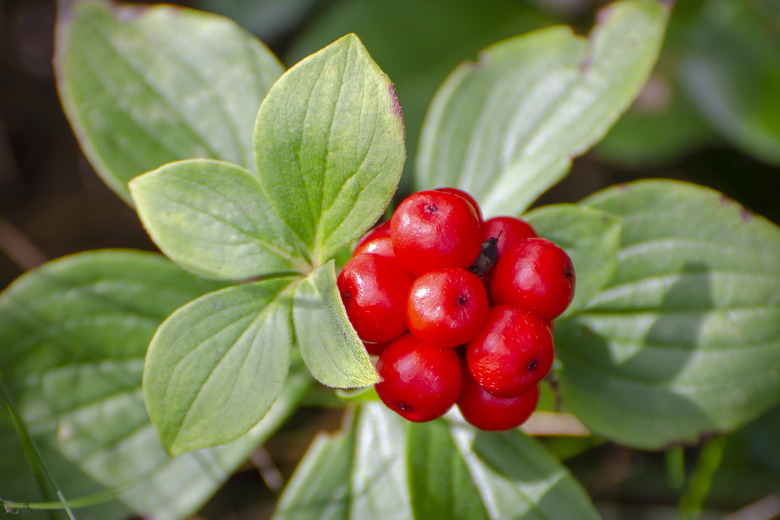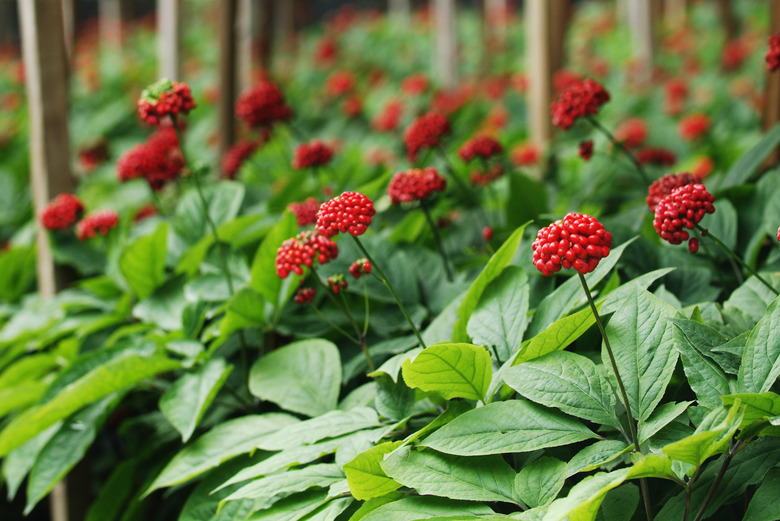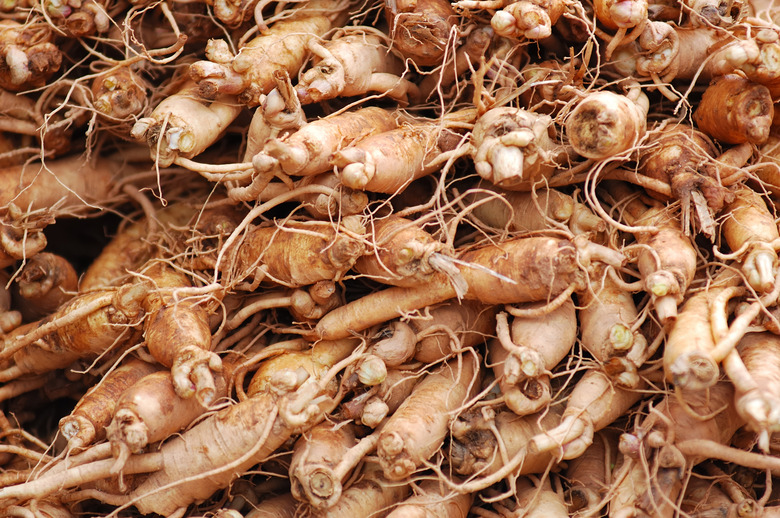How To Grow Ginseng
- Best uses for Korean ginseng
- How to grow Korean ginseng
- In what zone does Korean ginseng grow best?
- When should you plant Korean ginseng?
- Soil, sunlight and water recommendations for Korean ginseng
- How to harvest Korean ginseng
- Common pests and other problems for Korean ginseng
- Common diseases for Korean ginseng
Korean ginseng (Panax ginseng) is a slow-growing perennial herb that is usually cultivated for the medicinal benefits of its gnarled roots. Ginseng grows from a taproot that sends up a short stalk each spring. This plant is native to Korea and other Asian countries, where it grows as an understory plant in deciduous forests. Wild ginseng has been overharvested and is currently globally endangered. Growing ginseng for its roots is a real commitment since the potent roots can only be harvested after five to seven years.
Best Uses for Korean Ginseng
Best Uses for Korean Ginseng
Korean ginseng, also called Asian ginseng, is the original ginseng plant with "man-shaped" roots that have been used as dietary supplements for centuries. It is classified as an adaptogenic herb, meaning an herb with health benefits. The species name, ginseng, is derived from the Chinese term for "in the image of a man." The genus name, Panax, means "all-healing" in Greek. Ginseng is reputed to treat many different medical issues and is a tonic for overall good health.
There is an American species known as American ginseng (Panax quinquefolius, plant hardiness zones 3-7), which Native Americans used medicinally for its healing qualities. Like Korean ginseng, it is also endangered in the wild.
Korean ginseng is a short, attractive foliage plant topping out at 24 inches tall. It produces large, oval leaves that are a fresh shade of green and summer flowers that develop into red berries. It is hardly ever grown as an ornamental. Rather, it is usually cultivated for its roots.
Ginseng has been used in traditional Chinese medicine for thousands of years. Many people claim that ginseng root lowers blood sugar and cholesterol levels, protects against stress, enhances strength and promotes relaxation. It is also reputed to boost the immune system, improve memory, speed recovery time from illness, serve as an antidepressant, widen blood vessels and generally improve physical and mental performance. In Asia, ginseng is fed to race horses to make them more competitive on the track.
Studies in Asia and Europe support claims that ginseng is beneficial to health. However, ginseng root is not recognized by the Food and Drug Administration as a drug, nor does the agency classify it as a plant with medicinal value. The FDA does call it a "generally recognized safe food."
How to Grow Korean Ginseng
How to Grow Korean Ginseng
- Common Name: Korean or Asian ginseng
- Botanical Name: Panax ginseng
- When to Plant: Fall or early spring
- USDA Zones: 5 or 6 through 9
- Sun Exposure: 70 to 80 percent shade of deciduous trees
- Soil Type: Moist, well-draining, loamy soil with organic content
- When it's in Trouble: Ginseng won't germinate if the soil dries out
- When it's Thriving: Produces vibrant green leaves
Starting Korean Ginseng From Seed
You can acquire seeds for Korean ginseng online, although it is much easier to find American ginseng seeds. The seeds must be treated before sowing. First, soak the seeds in a disinfecting solution of four parts water to one part bleach. This helps prevent a fungal infection. After that, shake the seeds in a paper bag containing enough fungicide to coat the seeds.
Sow ginseng seeds about 1/2 inch deep, spacing them 4 to 6 inches apart. Rows should be 8 to 10 inches apart. Once sowing is finished, cover the area with a mulch of rotted leaves. You need to keep the soil damp but not wet until the seeds germinate. Ginseng germination can take up to 18 months, and the seeds require consistently moist soil to germinate.
Ginseng is not an immediate-gratification plant. The roots will not be ready to harvest until they have been in the ground for five to seven years. During that time, add additional layers of rotted leaves every few months during the growing season to provide nutrients to the plants.
Starting Korean Ginseng From a Seedling
You can also start Korean ginseng from seedling roots if you can find them. In the United States, it is easier to find seedling roots from American ginseng. Seedling roots require the same growing conditions as seeds — that is, 70 to 80 percent shade and well-draining soil.
Before planting, inspect the rootlets to be sure they are firm and not mushy or soft. Plant the rootlets 1 to 2 inches deep and space them some 6 inches apart in rows that are 8 to 10 inches apart. One easy way to do this is to start at the top of a bed and dig a shallow trench 1 to 2 inches deep across the width of the bed. Set out the seedling roots in the trench and then dig a second trench parallel to the first trench. As you dig the second trench, use the soil to cover the seedlings in the first trench. Continue with this procedure down the length of the bed. When you put the seedlings into the trench, make sure the bud isn't exposed on the surface or pointing down.
In What Zone Does Korean Ginseng Grow Best?
In What Zone Does Korean Ginseng Grow Best?
Korean ginseng grows best in U.S. Department of Agriculture plant hardiness zones 5 or 6 through 9. American ginseng tolerates colder climates, growing as a perennial in zones 3 through 7.
When Should You Plant Korean Ginseng?
When Should You Plant Korean Ginseng?
Plant Korean ginseng in autumn or in early spring.
Soil, Sunlight and Water Recommendations for Korean Ginseng
Soil, Sunlight and Water Recommendations for Korean Ginseng
Before you start indiscriminately digging a hole, spend some time thinking about where to plant the ginseng. When you are selecting a site, think about how the plant grows in the wild. Korean ginseng's original habitat is wild forest land, where it is an understory plant. This is the type of habitat you need to replicate in your yard.
Korean ginseng requires well-draining, loamy soil that is rich in organic content. The soil should be mildly acidic with a pH between 5.5 and 6.0. You'll have to regularly add nutrients to the soil to keep the ginseng happy. This is best done by applying organic mulch, like decayed leaves. Don't use a lot of soil supplements, as they speed up growth and make ginseng more vulnerable to disease. Mulch is better, and in fact, it is essential to help ginseng retain moisture and to keep down weeds. Use a 2-inch layer but double this if your region has cold winters.
Korean ginseng needs a spot under trees that offers 70 to 80 percent shade for the plants. Ideally, this will be under deciduous trees like sugar maple and tulip poplar. If you don't have a grove of trees on your property, create artificial, dappled-shade, wooden lath sheds or polypropylene fabric. Place artificial shade about 7 feet above the ground to allow for good air circulation.
Once the plants are established, you should be able to reduce watering as long as the site gets adequate shade and regular mulching. However, if your region does not get 40 to 50 inches of rain a year, you'll have to provide irrigation for mature plants as well.
How to Harvest Korean Ginseng
How to Harvest Korean Ginseng
Harvesting depends on which part of the plant you intend to use. Some people grow ginseng for the seeds, which can be sown or sold to other gardeners. Seeds can be harvested after the plants are about three years old. That's when they start producing flowers that develop into red berries filled with seeds. An average plant produces at least 15 berries, each one with two seeds. Pick the seed-filled berries in the fall when they are ripe. (Waiting too long allows wild animals to get there first.) Store these out of direct sun and protect them from rodents.
Most people, however, grow ginseng for the roots, but for this you'll have to be patient. Ginseng roots will be ready to harvest in five to seven years. When it is time to harvest the roots, it's important to dig slowly and be gentle. Carefully remove the roots from the soil and let them dry on a screened tray in a room with a temperature between 70 and 90 degrees Fahrenheit. The roots will be sufficiently dry when they snap easily when bent. This can happen relatively quickly for small roots but can take weeks for larger roots.
Common Pests and Other Problems for Korean Ginseng
Common Pests and Other Problems for Korean Ginseng
Many different types of animals may be interested in your Korean ginseng plants. These can include moles, voles, squirrels, flying squirrels, shrews, chipmunks, rabbits and possums. These creatures are not interested in the ginseng roots; they are interested in the berries. Birds also enjoy eating berries. You can protect against seed thieves by picking the fruit as soon as it ripens. Alternatively, fence the entire area.
Snails and slugs can get into the ginseng bed and chow down on the leaves. Use any of the usual solutions to deal with these pests, like beer traps for slugs or diatomaceous earth for snails.
Ferns can also be a problem for ginseng. Some experts feel that they can poison ginseng plants if they are located nearby. To avoid this, keep ginseng crops and ferns far from each other in your garden.
Common Diseases for Korean Ginseng
Common Diseases for Korean Ginseng
Fungal diseases are the most common problems for ginseng, and blight is the most common. When the weather is hot and humid, oily looking spots appear on plant stems and leaves, eventually killing the leaves. Alternaria blight spores are spread by wind, and they overwinter in leaf litter. To manage this blight, remove leaf litter around the plants in autumn and replace it with a sterile substitute.
Phytophthora blight is spread through water-borne spores rather than wind-blown spores. To combat this, keep your ginseng plants well spaced to allow air to pass between the plants, which helps keep the foliage dry.
Seedling damping-off is also very common in ginseng. It infects 1-year-old ginseng stems during cold, wet springs. The stems collapse, and the ginseng foliage wilts. Prevent this disease by planting ginseng in a well-draining area and using lighter rather than heavier mulches.
Root rot causes droopy, discolored leaves during the growing season. Infected plants often fail to sprout in the spring. Look for red, yellow or brown spots on leaves or rusty lesions on roots that turn into black stubs. Dig up and dispose of all diseased plants. Prevent this by making sure that the soil is well-draining and not overly acidic. Don't crowd your plants and keep weeds down.


